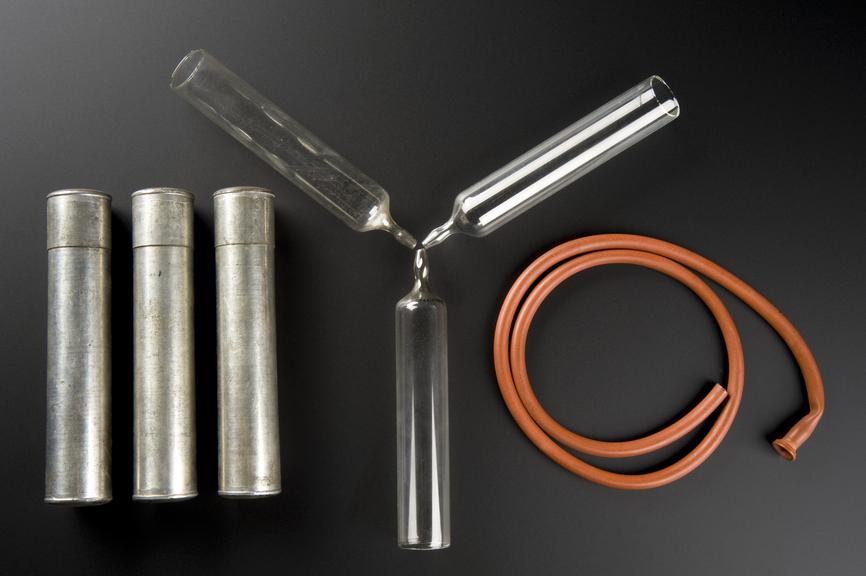Components from ‘Twilight Sleep’ apparatus
Components from ‘Twilight Sleep’ apparatus
- Object Number:
- 1982-561/272/1
- type:
- component

Three glass funnels, cased, and length of rubber tubing from Jarman's apparatus for intravenous Evipan injection or "Twilight Sleep", no maker marked, 1933-1955
The glass funnels are shown here with their individual metal cases and a length of rubber tubing. Together they are part of Jarman’s apparatus to intravenously inject anaesthetic during childbirth. This was a technique known as ‘Twilight Sleep’. The apparatus used a three-way syringe invented by anaesthetist Ronald Jarman (1894–1973).
Twilight Sleep used a mixture of morphine for pain relief and a memory suppressant called scopolaminem. It was given to women during labour and the sedation usually resulted in a lack of inhibitions. Women were often physically restrained during labour and had little memory of the events. Many women felt it was unacceptable that the sedation largely ‘removed’ mothers from the real experience of childbirth. But their traumas went largely unnoticed because, until relatively recently, it was uncommon for fathers to be present at the birth.
Components from ‘Twilight Sleep’ apparatus
Components from ‘Twilight Sleep’ apparatus